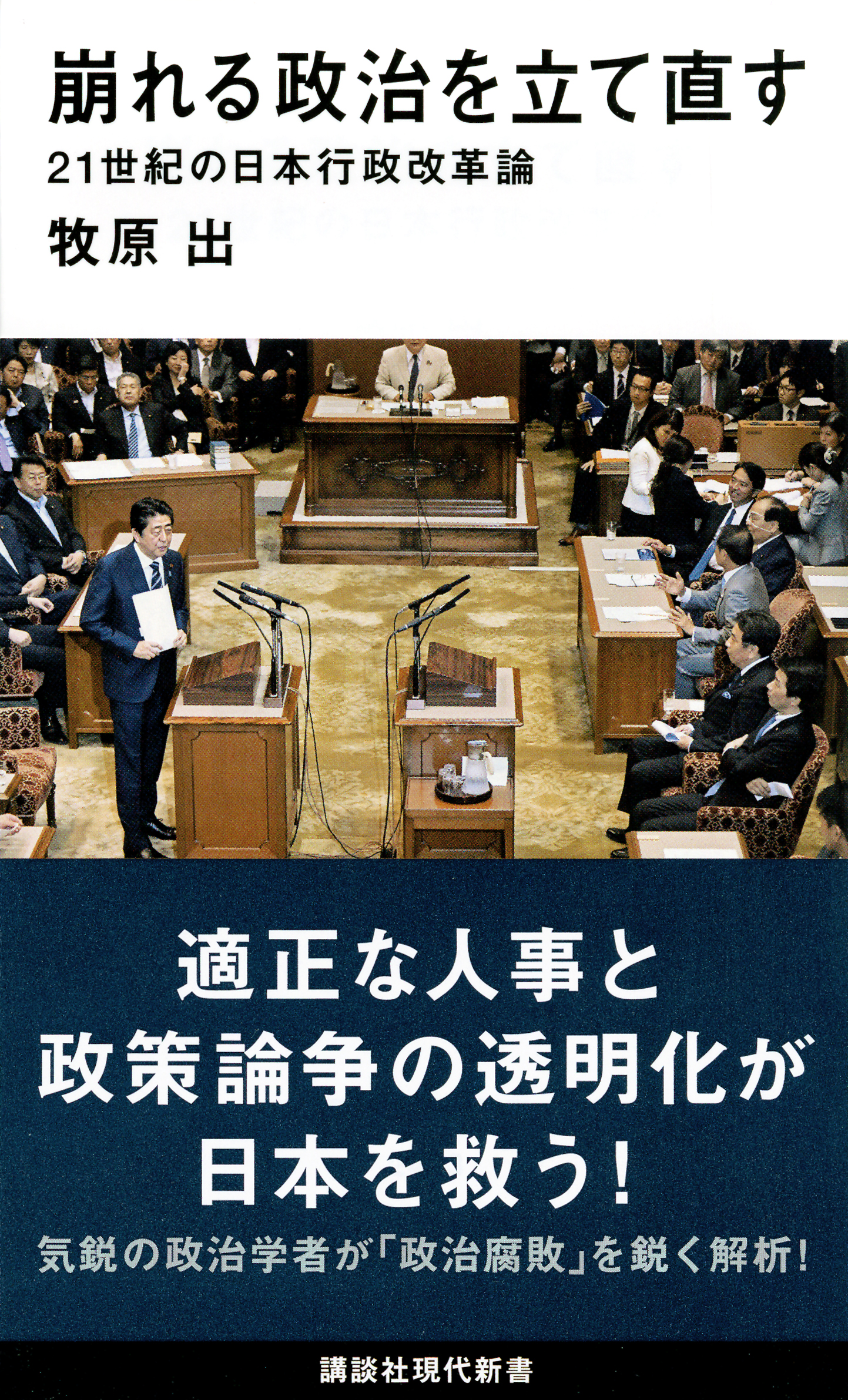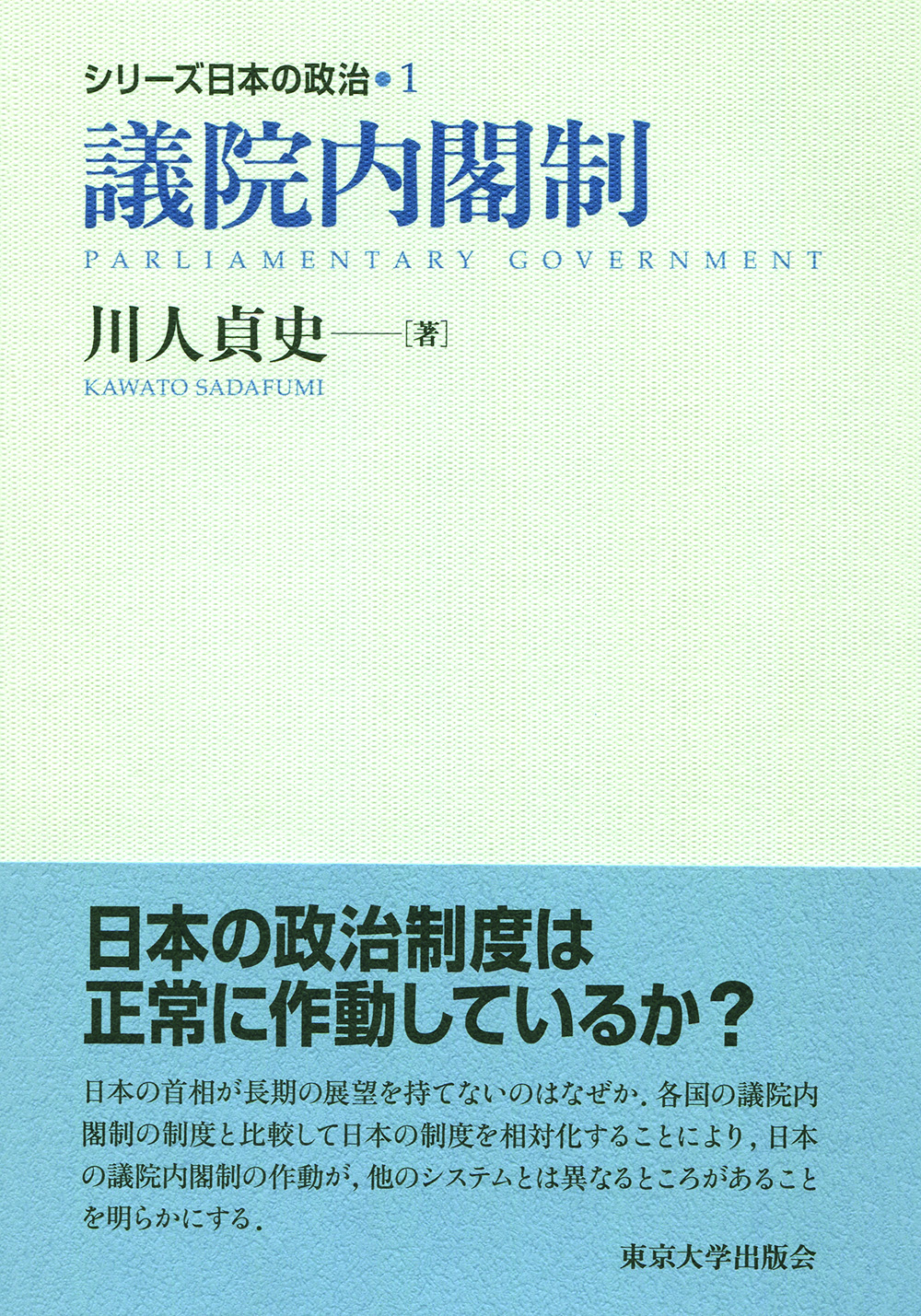
Title
Tōchi no jōken (Party Government and Party Governance: The Case of the Democratic Party of Japan)
Size
386 pages, A5 format
Language
Japanese
Released
January 30, 2015
ISBN
978-4-8051-1052-2
Published by
Chikura Publishing company
Book Info
See Book Availability at Library
Japanese Page
This volume analyzes how the Democratic Party of Japan (DPJ) governed from September 2009 to December 2012, with a special focus on party organization and intra-party politics. The birth of the DPJ administration can be understood as a result of political reforms enacted during the 1990s that were meant to create a two-party system with competition based on clear programmatic policy alternatives. In order to change politicians’ behavior, the old 3-to-5 candidate constituencies were abolished in favor of a mixed-member majoritarian system in which more than two-thirds of the seats are from single-member districts. The electoral reforms were intended to build a system in which voters could select one candidate in their district, one party leader for prime minister, and one party’s policy manifesto—all in one go—in general elections. Also, the Cabinet Office was established when the central government’s ministries and agencies were reorganized in 2001 to expand the cabinet’s organizational capacity for policymaking. It was expected that a prime minister elected in the new system would exercise stronger leadership and break through the entrenched ministries and their vested interests. The change of government from the LDP to the DPJ in 2009 can be seen as the product of these electoral reform and administrative reforms.
It must be said, however, that the DPJ administration was a political disaster. This publication seeks to analyze the reason why the DPJ failed so miserably. To understand the malfunction of the DPJ in government, we make a thoroughgoing review of the existing research and complied various data sets for analysis. Before the actual change of government happened, political scientists and journalists argued that electoral reform and the creation of the Cabinet Office would grant more power to the political parties’ executive divisions. This argument was based on an implicit assumption that the leader of the ruling party (i.e. the prime minister) would ensure rank-and-file parliamentarians followed the party line. However, serious attention has rarely been given to how party leaders can enforce the level of party discipline necessary for effective policymaking.
Chapter 1 of this book surveys the prior research and examines the theoretical issues raised. Chapters 2–7 cover the organization of political parties, including a detailed analysis of the intra-party dynamics of the DPJ that supported (or rather, failed to support) the cabinet. This is done through looking at leadership reshuffles and elections within the DPJ, the process of manifesto writing, policy research committees, and also through two case studies of local party organizations. Through analysis of these structures within the party, we conclude that the DPJ ran its administration without ever establishing systems or procedures that could achieve broad intra-party consensus and that revising the decision-making procedure within the party itself pushed the DPJ into a vicious cycle of internal conflict. Chapter 8 examines the resulting breakup of the DPJ, while Chapter 9 looks at the voters’ reactions as seen in opinion polls. The final chapter, rather than simply confining itself to how the DPJ lost the election, discusses the case of the DPJ in the historical and institutional context of Japanese politics. Having done so, some thought is given to the lessons to be drawn from the three-year experience of the DPJ in government. The authors sincerely hope that this volume will find its way into the hands of all readers who harbor an interest in Japanese politics.
(Written by MAEDA Yukio, Professor, Interfaculty Initiative in Information Studies / 2018)



 Find a book
Find a book



